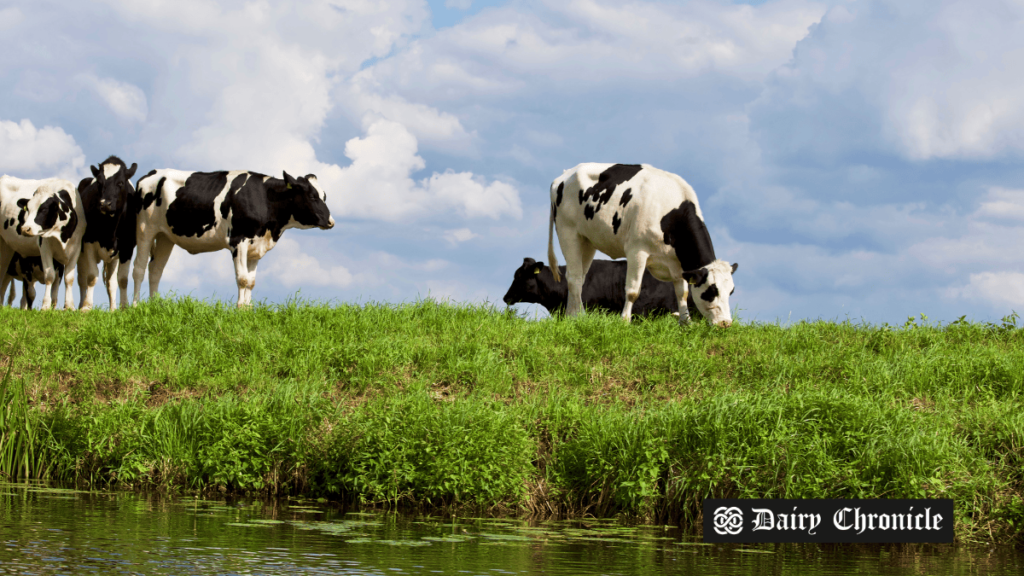Kevin Harvatine, a Penn State professor, shared insights at the university’s dairy nutrition workshop, highlighting five factors that can boost milk fat production. The key strategies include optimizing genetics, accounting for seasonal variations, carefully managing fatty acid feeds, tapping into niche butter markets, and improving overall cow management practices. These factors can help dairy farmers increase milk fat levels, adding value to their product and improving farm profitability.
Increasing milk fat content is one of the most effective ways for dairy farmers to add value to their milk, explained Kevin Harvatine, a professor of nutritional physiology at Pennsylvania State University. Harvatine shared insights at Penn State’s annual dairy nutrition workshop, held at the Hershey Lodge, highlighting five factors—genetics, seasonality, fatty acid feeds, butter production, and management practices—that could help dairy farmers optimize milk fat production for a competitive edge.
- Genetics
Advances in cow genetics have driven a substantial boost in milk fat levels over the past decade. Historically, milk fat content averaged around 3.7%, but in recent years, levels have risen, with the Northeast reaching an average of 4.2% in 2023. Improved genetics have led to “supercharged” cows capable of producing higher fat levels. Harvatine noted that dairy farmers need to recognize and manage this increased genetic potential. Today, a farm’s average may be 4.35%, so any drop below 4% could impact profitability, signaling a need to engage a nutritionist to identify optimal solutions. “We need to keep up to the genetic potential of this cow,” Harvatine advised, urging farmers to recalibrate their management expectations in line with these advancements. - Seasonality
Milk fat production is highest in January and lowest in July, following an annual pattern that persists despite adjustments for heat stress. Harvatine suspects this pattern results from the natural daylight cycle, as artificial lighting fails to fully replicate the impact of longer days during summer months. To mitigate these variations, he suggests farmers establish two seasonal targets: one for winter, with a goal about 0.25% higher in January, and a lower summer goal for July. This cyclical adjustment helps farms account for inherent biological patterns, allowing a more realistic year-round milk fat target. - Fatty Acid Feeds
Simply adding more dietary fat doesn’t necessarily yield higher milk fat content. Harvatine explained that the mammary gland adjusts fat synthesis based on dietary fat availability. When fat in the diet increases, the gland may reduce its energy-intensive internal fat production, resulting in little net change in milk fat content. Conversely, lowering dietary fat may not trigger an increase in milk fat production either, as cows may reach their physiological production limits or run out of acetate, which is essential for fat synthesis but is only produced with adequate rumen fermentation. Furthermore, fatty acid feeds are costly, with prices influenced by the volatile market for oilseed crops. For instance, U.S. soybean crush capacity is expected to expand, potentially making soybean meal cheaper. But increased demand for biodiesel and competition from other countries may further complicate market stability. - Butter Production and Niche Markets
Adding palmitic acid as a feed additive can raise the melting point of butter, making it firmer and more suited for certain uses like baking. Food scientists believe this difference is noticeable to consumers and could offer dairy producers a niche market opportunity, particularly for industrial food applications. Harvatine noted that Ireland, which has sought new markets for its distinctive soft butter post-Brexit, could serve as an example. Ireland’s butter has a slightly different color and lower melting point, making it popular among specific consumer groups. In 2022, the U.S. imported $350 million worth of Irish butter. Harvatine sees this as a potential opportunity for U.S. producers to create similar niche butter products with unique qualities. - Management Practices
Beyond nutritional adjustments, Harvatine emphasized that factors like forage quality, reproduction rates, mastitis control, and cow comfort are critical for optimal milk fat production. He pointed out that the longevity of cows is also key—first-lactation cows generally produce less fat and protein than mature cows. Extending cow longevity can increase overall milk fat yield, as mature cows produce milk with a higher fat and protein content. Farmers should therefore aim to improve herd management practices, focusing on maintaining cow health and comfort, to get the best long-term milk fat results.
Harvatine’s presentation provides dairy producers with a detailed framework for enhancing milk fat production, highlighting both scientific and practical strategies. By considering genetics, seasonal goals, fatty acid feeding, butter niche markets, and holistic management, farmers can optimize milk production while adjusting to evolving consumer and market demands.



